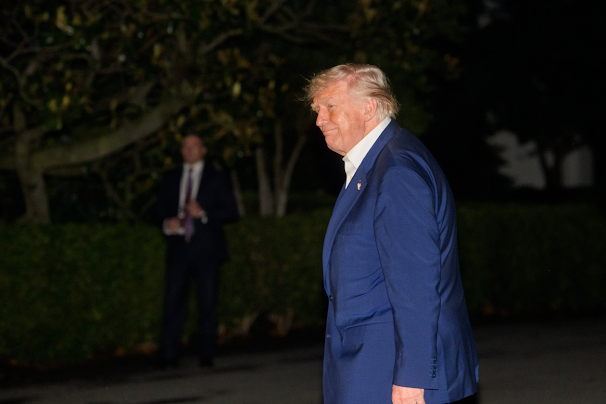After months of inconsistent pressure and unheeded public
appeals to advance ceasefire negotiations between Russia and Ukraine, President
Donald Trump appears to be stepping back.
Following a two-hour call with Russian President Vladimir
Putin on Monday, Trump announced that the U.S. and Russia would “immediately”
begin ceasefire discussions. However, he also hinted at withdrawing from a
direct mediating role in the conflict, now entering its third year.
In a post on TruthSocial, Trump wrote, “The conditions for
that will be negotiated between the two parties, as it can only be, because
they know the details of a negotiation that nobody else would be aware of.” He
described the “tone and spirit” of his conversation with Putin as “excellent.”
Trump’s shift away from his earlier pledge to end the war
“on day one” carries serious implications for Ukraine’s future and European
security. Ukraine has relied heavily on U.S. support as a bargaining tool,
including the leverage of sanctions. Meanwhile, Putin appears to be waiting out
the clock. Having failed to sway Putin through an approach heavy on incentives
and light on penalties, Trump now seems to be retreating—without implementing
new sanctions.
Later on Monday, Trump told reporters in the Oval Office
that he wasn’t fully abandoning the peace process, though he acknowledged
having a personal “red line” he wouldn’t disclose. “I do have a certain line,”
he said. “But I don’t want to say what that line is because it makes the
negotiation even more difficult.”
He expressed cautious optimism that “something big” might
happen soon, while acknowledging that talks could still fall apart. “Big egos
involved,” he said, “but I think something’s going to happen. And if it doesn’t
— just going to have to back away and keep going.”
Known for his unpredictability, Trump could re-enter the
negotiations if progress occurs. But for now, his apparent disengagement could
signal a broader shift in foreign policy priorities—toward trade negotiations
and possibly a nuclear deal with Iran. Europe may soon need to bolster
Ukraine’s defenses independently, as U.S. reluctance to provide more military
aid or lead talks could open a path for Russia to escalate its war of
attrition.
Some European leaders, after speaking with Trump post-call,
issued a statement reaffirming support for Ukraine. They pledged to increase
sanctions on Russia—stepping in where the U.S. would not—though no timeline was
offered.
By agreeing to enter ceasefire talks, Putin seems to have
bought himself more time with Trump. Though Trump has occasionally floated the
idea of more sanctions, he has yet to act. According to Russian state media
outlet TASS, Putin committed only to discussing a ceasefire after other
unspecified “relevant agreements” were secured.
His offer to work on a “memorandum” with Ukraine falls short
of Kyiv’s key condition: that peace talks begin only after a ceasefire is in
place.
Ukrainian President Volodymyr Zelenskyy, speaking in Kyiv
after his own call with Trump, urged the U.S. not to withdraw from its
mediating role and pushed for tougher sanctions on Russia.
“It is crucial for all of us that the United States does not
distance itself from the talks and the pursuit of peace, because the only one
who benefits from that is Putin,” Zelenskyy wrote on X.
Speaking earlier, Zelenskyy expressed cautious doubt about
Russia’s intentions. “Trump thinks Russia is ready for negotiations and
compromises. But we will see,” he said. “If Russia demands we abandon our land,
that’s not a ceasefire—it’s surrender. And we won’t accept that.”
Ukrainian MP Iryna Gerashchenko was more blunt, calling
Trump’s proposal “a trap.” She warned that direct negotiations without
mediators or enforcement mechanisms would allow the Kremlin to shift blame,
delay, and continue its assault.
Trump has recently suggested he might walk away from
negotiations if both sides can’t find common ground—a possibility that may
factor into Putin’s strategy, potentially reducing pressure to engage seriously
in the talks.
Earlier Monday, Vice President JD Vance, speaking aboard Air
Force Two after attending Pope Leo’s inaugural mass in Rome, acknowledged the
impasse. “We’re more than open to walking away,” Vance said. “The United States
is not going to spin its wheels here. We want to see outcomes.”
Last week’s Istanbul talks between Russian and Ukrainian
officials yielded little. Putin refused to meet Zelenskyy, who had traveled to
Ankara and expressed openness to a face-to-face encounter—their first since the
war began.
After a private meeting with Zelenskyy at Pope Francis’
funeral, Trump publicly mused that Putin may be “tapping” him along. The U.S.
quickly moved to sign an economic agreement with Ukraine to create a joint
investment fund—framed by the White House as a long-term commitment to
Ukraine’s recovery and a deterrent against future Russian aggression.
Secretary of State Marco Rubio and other officials have said
the White House’s 30-day ceasefire proposal, already accepted by Ukraine,
shifts the burden to Russia to demonstrate sincerity. Yet Trump has held back
from increasing pressure on Moscow, discussing further sanctions without
enacting them.
While traveling in the Middle East last week, Trump
dismissed Putin’s refusal to meet Zelenskyy in Istanbul, saying the Russian
leader only wanted to talk to him.

Comments
Post a Comment